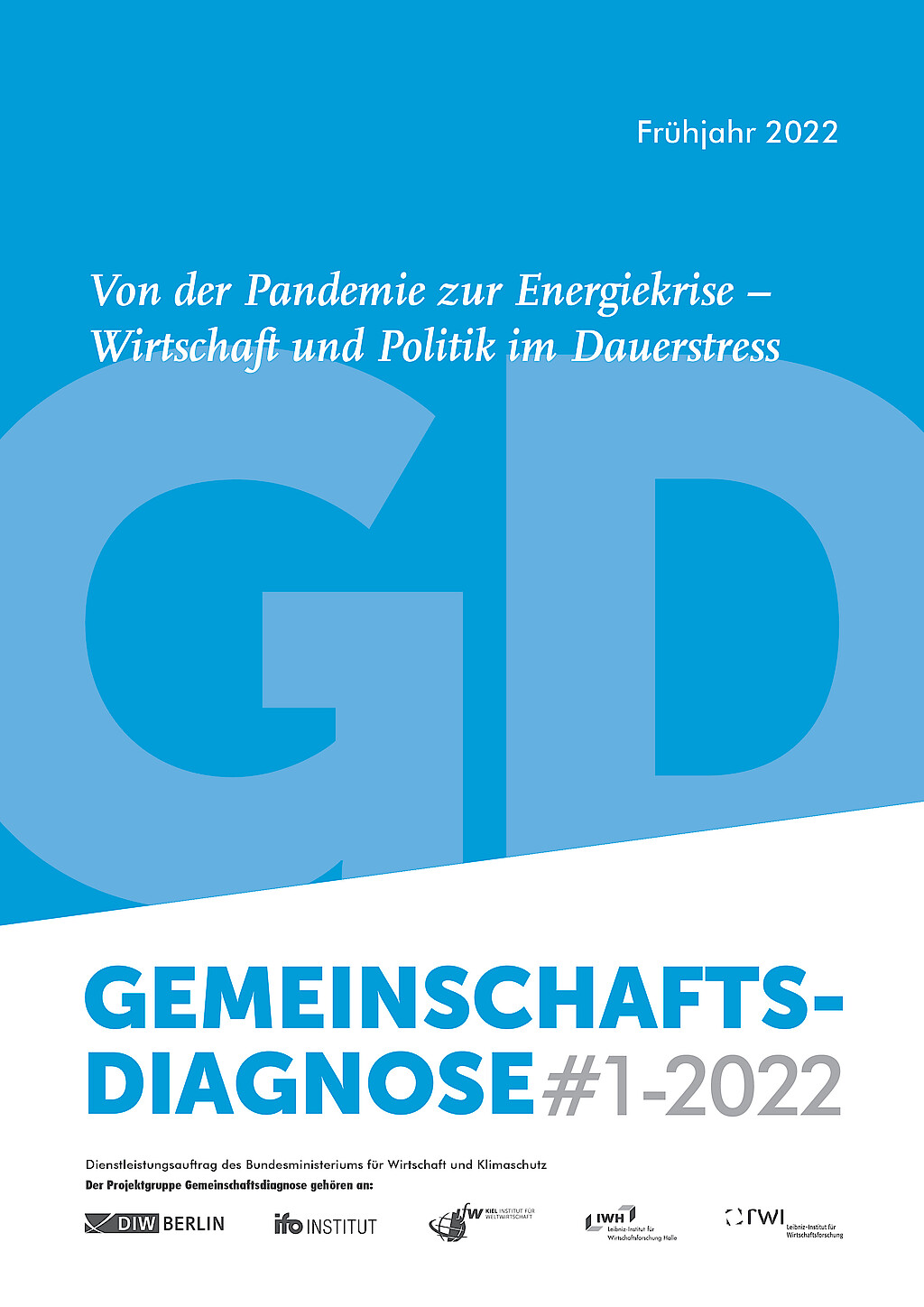Economy in East Germany will not suffer more from the war in Ukraine than in Germany as a whole – Implications of the Joint Economic Forecast Spring 2022 and new data for the East German economy
In its Spring Report, the Joint Economic Forecast Project Group states that the recovery of the German economy will weaken considerably due to the Russia’s attack on Ukraine. In principle, this also applies to the East German economy. However, the recession and the recovery were not as pronounced as in West Germany. “This is because public service providers, which are less affected by economic fluctuations than the private sector, have a particularly large weight in the east. In 2021, consequently, East German output grew by 2.3%, 0.6 percentage points less than in Germany as a whole,” says Oliver Holtemöller, Head of the Department Macroeconomics and Vice President at the Halle Institute for Economic Research (IWH). The marked decline in construction output of 2.3% (Germany as a whole: ‒0.5%) is striking. It was particularly strong in Berlin, at ‒3.5%, after it had already fallen slightly in 2020. However, this does not reflect a crisis in Berlin’s economy as a whole, which expanded by 3.3%, much faster than in other East German states.
In 2022 and 2023, East German output is likely to expand at 2.1% and 2.5% respectively, by roughly half a percentage point slower than in Germany as a whole. The war in Ukraine will hit the East German economy about as hard as Germany as a whole. It is noteworthy that the share of exports from East Germany to Russia, Belarus and Ukraine in all East German exports is, with 2.2%, about as high as the corresponding share from Germany as a whole.
There is, however, the risk of a halt in Russian supplies of oil and natural gas, which cover a large part of East German demand. If this risk materialised, a nationwide management of natural gas would have set in because, unlike oil, Russian gas cannot be replaced by other suppliers in the short term. In this case, the institutes forecast German GDP growth of 1.9% in 2022 and a decline of 2.2% in 2023. For East Germany, rates of 1.2% in 2022 and ‒1.5% in 2023 were to be expected. “The recession would be flatter in the east because the heavily affected manufacturing sector has a lower weight than in the west,” says Oliver Holtemöller. In addition, the share of the eight most energy-intensive industries in the total manufacturing sector in East Germany, measured by the sum of wages paid, is, with about 50%, significantly lower than in West Germany (about 60%).1
The unemployment rate as defined by the Federal Employment Agency will fall from 7.1% in the previous year to 6.4% in 2022 if there is no gas freeze. The decline will come to a halt in 2023 due to this year's sharp increase in the minimum wage. In the event of a gas freeze, the rate is 6.5% this year, rising to 7.1% in 2023.
1 The industries are listed in: Projektgruppe Gemeinschaftsdiagnose: Ein alternatives Szenario: EU ohne Energierohstoffe aus Russland – Methodenbeschreibung. Materialien, No. 1, 2022, Table 2 (in German).
Joint Economic Forecast, spring 2022 report (in German):
Joint Economic Forecast: Von der Pandemie zur Energiekrise – Wirtschaft und Politik im Dauerstress. April 2022. Kiel 2022.
Whom to contact
For Researchers

Vice President Department Head
If you have any further questions please contact me.
+49 345 7753-800 Request per E-MailFor Journalists

Internal and External Communications
If you have any further questions please contact me.
+49 345 7753-832 Request per E-MailIWH list of experts
The IWH list of experts provides an overview of IWH research topics and the researchers and scientists in these areas. The relevant experts for the topics listed there can be reached for questions as usual through the IWH Press Office.
Related Publications

Von der Pandemie zur Energiekrise – Wirtschaft und Politik im Dauerstress
in: Dienstleistungsauftrag des Bundesministeriums für Wirtschaft und Klimaschutz, 1, 2022
Abstract
Die deutsche Wirtschaft steuert durch schwieriges Fahrwasser. Die Auftriebskräfte durch den Wegfall der Pandemiebeschränkungen, die Nachwehen der Corona-Krise und die Schockwellen durch den Krieg in der Ukraine sorgen für gegenläufige konjunkturelle Strömungen. Allen Einflüssen gemeinsam ist ihre preistreibende Wirkung. Im zurückliegenden Winterhalbjahr haben vor allem die Maßnahmen zum Infektionsschutz die Wirtschaftsleistung gedämpft. Unter der Voraussetzung, dass das Kriegsgeschehen in der Ukraine mit Blick auf die ökonomische Aktivität nicht weiter eskaliert, werden die konjunkturellen Auftriebskräfte ab dem Frühjahr die Oberhand gewinnen. Nach einem schwachen Jahresauftakt dürfte das Bruttoinlandsprodukt im zweiten Quartal zwar deutlich zulegen, ohne die Belastung durch den Krieg in der Ukraine würde das Plus aber kräftiger ausfallen. Insgesamt verzögert sich damit der Erholungsprozess abermals. Das Vorkrisenniveau der Wirschaftsleistung wird demnach erst im dritten Quartal des laufenden Jahres erreicht werden. Alles in allem erwarten die Institute einen Anstieg des Bruttoinlandsproduktes von 2,7% für dieses Jahr und 3,1% für nächstes Jahr. Im kommenden Jahr driftet die deutsche Wirtschaft in eine leichte Überauslastung. Maßgeblich dafür sind der hohe Auftragsüberhang in der Industrie sowie nachholende Konsumaktivität. Im Falle eines sofortigen Embargos für die Öl- und Gaslieferungen aus Russland in die Europäische Union würde hingegen die deutsche Wirtschaft in eine scharfe Rezession geraten. Der kumulierte Verlust an gesamtwirtschaftlicher Produktion dürfte sich in diesem Fall bereits in den beiden Jahren 2022 und 2023 auf rund 220 Mrd. Euro belaufen, was mehr als 6,5% der jährlichen Wirschaftsleistung entspricht.



